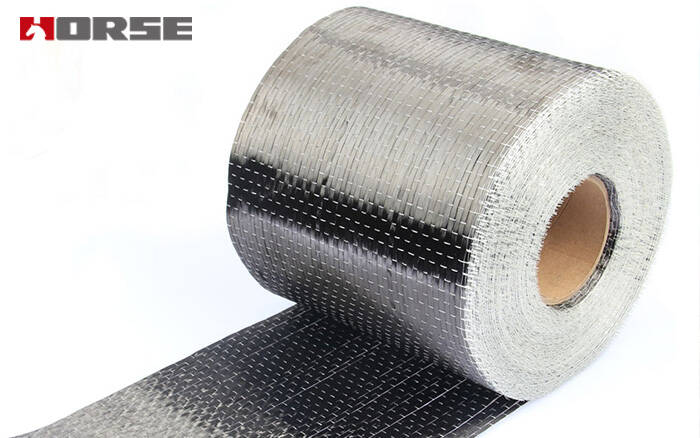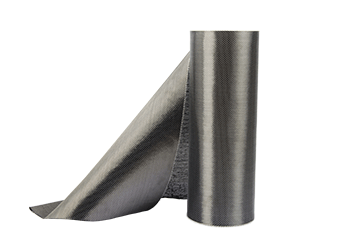Solutions
Horse Construction offers full range of structural strengthening materials with technical supports, documentation supports, products supports, project supports.
carbon fiber reinforced bridge

Carbon fiber is very fine fiber. Because of its high strength, it has high tensile strength in the fiber direction after being integrated by epoxy resin. In the strengthening design of structures, the general principle is to avoid combining two materials with excessively different properties. Although the strength of carbon fiber is very high, its elastic modulus is similar to that of steel. Carbon fiber is used for strengthening of reinforced concrete without mismatching problems, so it can be used to make up for the lack of tensile strength of steel in reinforced concrete.
The carbon fiber reinforced structure is a secondary combined structure. And just like the kneading force between steel bar and concrete, carbon fiber needs to be combined with concrete with the help of adhesive, and the combination between the two must be greater than the shear strength of the concrete itself. This kind of adhesive is applied to the flat concrete surface, which is generally called the bottom resin, which is easy to penetrate into the concrete and combine with the concrete to form a resin-like concrete. It can strengthen the strength of concrete and is closely combined with carbon fiber to effectively transmit shear force. When carbon fiber is used to stick to the tension surface of the concrete structure, the carbon fiber and the original structure form a new force-bearing whole. The carbon fiber and the steel bars bear the load together, reducing the stress of the steel bars, so that the structure can achieve the effect of strengthening and strengthening.
The main advantage of this material is that its performance can be changed through the design of the material at the macro and micro levels, so as to meet the actual requirements of engineering.

Compared with traditional bridge strengthening methods, carbon fiber strengthening technology has the following notable features
(1) Good mechanical properties of materials.
The tensile strength of carbon fiber material is more than 10 times that of ordinary steel, the elastic modulus is similar to steel, and the weight is light. It can make full use of its high strength and high modulus characteristics to improve the structure and components in the process of strengthening and strengthening the concrete structure. Its bearing capacity and ductility improve its acceptance performance and achieve the purpose of efficient strengthening.
(2) Good corrosion resistance and durability
As a composite material, carbon fiber has stable corrosion resistance and durability, and does not react with chemical substances such as acid, alkali and salt. Therefore, reinforced concrete members reinforced with carbon fiber materials have good corrosion resistance and durability. Carbon fiber and structural glue are not affected by the harsh environment, which greatly reduces the cost of corrosion and maintenance. It also protects the internal concrete structure and solves the chemical corrosion problems encountered by other strengthening methods.
(3) Light weight, without increasing the weight and section size of the components
Carbon fiber cloth is light in weight and thin in thickness, and its unit volume weight is only about 1/4 of that of steel. After strengthening, it does not increase the weight and section size of the component. The reinforced and repaired components basically do not increase the weight and size of the original structure and change the cross-sectional shape, and will not reduce the use space of the building, and will hardly change the headroom under the bridge. This advantage is unmatched by traditional strengthening methods.
(4) Good adaptability
Since carbon fiber cloth is a flexible material and can be cut arbitrarily, this method can also be used for round and curved structures. In particular, the cloth-like sheet can be pasted and wrapped to adapt to the shape of various structures, and the forming is very convenient. Therefore, this strengthening technology can be widely used in various structural types, various structural shapes and various parts in the structure. And does not change the shape of the structure and does not affect the appearance of the structure. At the same time, for structures and components that cannot be implemented by other strengthening methods, such as large bridge piers, bridges and bridge slabs, as well as tunnels, large cylinders and shell structures, carbon fiber strengthening technology can be successfully solved.
(5) strengthening construction is extremely convenient
Because of its light weight, strong maneuverability, loose operating space requirements, no wet work, no need for large construction machinery, less construction area, less impact on the environment during construction, and high work efficiency. Especially for the box girder structure, when the working space inside the box girder is limited, its maneuverability is very good, that is, it can save huge support costs, but also has a certain degree of safety and concealment.
(6) The epoxy resin series materials are effectively bonded to the structure, and there is no need to drill holes and embed tracing bolts in the original structure, so it will not cause new damage to the original structure.
(7) Does not affect traffic
Most of the conventional strengthening construction needs to prohibit the passage of vehicles, and the use of carbon fiber materials for strengthening, generally does not require traffic control.
(8) Low strengthening cost
The theoretical and experimental research on the strengthening of existing concrete beams with carbon fiber cloth paste shows that using carbon fiber cloth instead of steel plates to strengthen concrete beams can save about 25% of money.
Compared with other traditional strengthening methods, because carbon fiber has good mechanical properties, high strength and efficiency, thin material, light weight, simple construction, and good corrosion resistance, it is an effective new strengthening method. It is not only suitable for the strengthening of highways and bridges, but also for the strengthening of houses and hydraulic structures. Not only can it provide bending strengthening but also can be used for shear strengthening, fatigue strengthening, and shear wall strengthening.
You can find anything here you are in need of, have a trust trying on these products, you will find the big difference after that.

High strength carbon fiber reinforced polymer (CFRP) strip / laminate / plate for structural strengthening and concrete repair

High strength, unidirectional carbon fiber fabric pre-saturated to form a carbon fiber reinforced polymer (CFRP) fabric used to strengthen structural concrete elements.

High strength, unidirectional carbon fiber sheet pre-saturated to form a carbon fiber reinforced polymer (CFRP) sheet used to strengthen structural concrete elements.